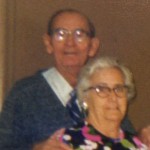
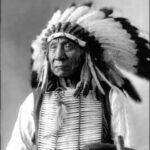 When my grandfather first met Chief Red Cloud, it was an eye-opening experience for sure. I’m not exactly sure how old Grandpa was at the time, but since Red Cloud died when my grandfather was 16 years old, I have a timeframe to start with. Red Cloud was born near the forks of the Platte River in 1820 (exact date is unknown). He was one of a family of nine children whose father, an able and respected warrior. Red Cloud lived in an exemplary life. He was faithful to one wife all his days and was a devoted father to his children. He wanted great things for his only son, known as Jack Red Cloud. He wanted his sone to be a great warrior too and started him on the warpath at the age of fifteen. Of course, at this point, Red Cloud didn’t realize that the days of Indian warfare were very close to an end. Among the chiefs of his era, Red Cloud was known as a quiet man, simple and direct in speech, courageous in action, an ardent lover of his country. He possessed all the manly qualities characteristic of the American Indian in his best days. Red Cloud lived a long life and died on December 10, 1909, of natural causes.
When my grandfather first met Chief Red Cloud, it was an eye-opening experience for sure. I’m not exactly sure how old Grandpa was at the time, but since Red Cloud died when my grandfather was 16 years old, I have a timeframe to start with. Red Cloud was born near the forks of the Platte River in 1820 (exact date is unknown). He was one of a family of nine children whose father, an able and respected warrior. Red Cloud lived in an exemplary life. He was faithful to one wife all his days and was a devoted father to his children. He wanted great things for his only son, known as Jack Red Cloud. He wanted his sone to be a great warrior too and started him on the warpath at the age of fifteen. Of course, at this point, Red Cloud didn’t realize that the days of Indian warfare were very close to an end. Among the chiefs of his era, Red Cloud was known as a quiet man, simple and direct in speech, courageous in action, an ardent lover of his country. He possessed all the manly qualities characteristic of the American Indian in his best days. Red Cloud lived a long life and died on December 10, 1909, of natural causes.
Red Cloud, like most chiefs was a warrior in his day. He was famous for Red Cloud’s War that took place between 1866 and 1868. Nevertheless, Red Cloud was a wise man, and he saw that if his people were going to survive, they would have to make peace with and learn to coexist with the White Man. He was also a man who wanted peace. In 1887, he opposed the Dawes Act, which broke up communal tribal holdings and allocated 160-acre plots of land for subsistence farming to heads of families on tribal rolls. Then, the US declared additional communal tribal lands as excess and sold them to immigrant settlers. In 1889, Red Cloud opposed a treaty to sell more of the Lakota land. Red Cloud and Sitting Bull steadfastly opposed the 1889 treaty, but government agents obtained the necessary signatures for approval only through cheating, such as using the signatures of children. Red Cloud negotiated strongly with Indian Agents such as Dr Valentine McGillycuddy, who was an honest man and highly respected by the Lakota. For the rest of his life, Red Cloud advocated for 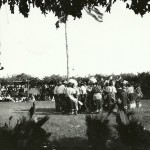
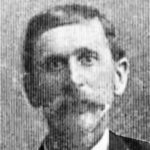
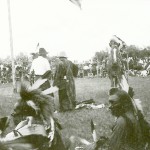 Native American rights to the Black Hills. During this time, June 15, 1893, to be exact, my grandfather was born in Springfield, South Dakota. The advocating Red Cloud did in those years was less violent, and more intellectual, although not any more fruitful than any other advocating he did. There were very few White Men he trusted…among them, my great grandfather, Cornelius Byer.
Native American rights to the Black Hills. During this time, June 15, 1893, to be exact, my grandfather was born in Springfield, South Dakota. The advocating Red Cloud did in those years was less violent, and more intellectual, although not any more fruitful than any other advocating he did. There were very few White Men he trusted…among them, my great grandfather, Cornelius Byer.
My great grandfather was invited to the Pow Wows and invited to sit in on their tribal meetings. He was also so respected by the Native Americans, that when he was dying, they all came to see him…bringing their wives and children to tell him goodbye. When he passed away, they followed him as far as they could toward his final resting place in Iowa. That said, between the year of my grandfather’s birth and the death of Red Cloud, I believe when my grandfather was about 12 years old, my great grandfather took my grandfather to visit Red Cloud. The Native American culture was quite different than the White Man’s. When Great Grandpa and Grandpa went into Red Cloud’s teepee, he was sitting there under a blanket. Red Cloud stood up to get a peace pipe to offer to Great Grandpa and the other men in the room. That was all fairly normal, even for my grandfather, but the fact that Red Cloud was naked was not something my grandfather was used to. In fact, my Aunt Sandy tells me that she doesn’t remember ever seeing her dad shirtless. He always wore at least a t-shirt, whether indoors or outdoors, in Summer or Winter. I’m sure Grandpa’s eyes were as big as saucers, until his dad nudged him, basically telling him not to stare. Grandpa sat quietly while the men talked, and then the peace pipe was lit. As it was handed around the circle, Red Cloud handed it to my grandfather. My grandfather looked at his dad, and Great Grandpa nodded his head. With that one motion, my grandfather was allowed to 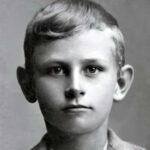
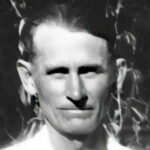 take his first puff of a peace pipe. I don’t know if Grandpa ever met with Red Cloud again, although I assume he did, and I don’t know if he ever smoked a peace pipe again either, but he did that day, and it was a moment in his life that he never forgot. It wouldn’t surprise me to find out that he smoked the peace pipe again either. It was a story he told to his children many times through the years. It was a sign of respect from the Lakota toward my grandpa, and from my grandpa toward them. Today is the 131st anniversary of my grandfather’s birth. Happy birthday in Heaven, Grandpa Byer. We love and miss you very much.
take his first puff of a peace pipe. I don’t know if Grandpa ever met with Red Cloud again, although I assume he did, and I don’t know if he ever smoked a peace pipe again either, but he did that day, and it was a moment in his life that he never forgot. It wouldn’t surprise me to find out that he smoked the peace pipe again either. It was a story he told to his children many times through the years. It was a sign of respect from the Lakota toward my grandpa, and from my grandpa toward them. Today is the 131st anniversary of my grandfather’s birth. Happy birthday in Heaven, Grandpa Byer. We love and miss you very much.


Leave a Reply